 2025-08-14
2025-08-14
 https://metro.co.uk/2025/08/12/four-people-survived-one-deadliest-plane-crashes-killed-520-23834746/
HaiPress
https://metro.co.uk/2025/08/12/four-people-survived-one-deadliest-plane-crashes-killed-520-23834746/
HaiPress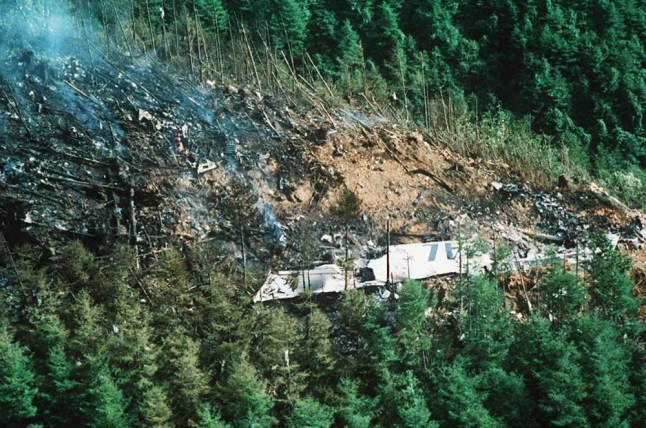
Finding the crash site on the mountainside took 15 hours (Picture: Getty Images)
Only four people were pulled out alive from the wreckage of the doomed Japan Airlines flight 123 after it crashed on a mountainside.
One of the world’s deadliest plane disasters struck four decades ago when the passenger jet carrying 524 people crashed shortly after takeoff.
Four people,including an eight-year-old child,miraculously escaped the decimated wreckage after the Boeing 747SR-46 plane crashed onto a remote mountain area of Mount Takamagahara.
The Japan Airlines flight 123,known as JAL123,remains Japan’s worst aviation accident to date.
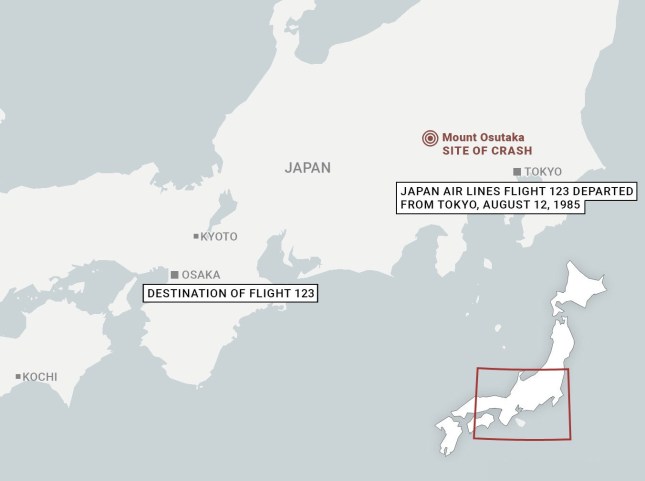
The doomed JAL123 flight left Tokyo towards Osaka on August 12,1985 (Picture: Datawrapper)
It has been dubbed the Titanic of Japan’s aviation world.
This is the story of the doomed Japan Airlines flight 123 that will never be forgotten.
The Boeing plane took off from Tokyo Haneda Airport and headed towards Itami,Osaka,as usual on August 12,1985.
The plane was packed with families flying on their summer vacations to escape the hot and humid Tokyo weather – a total of 509 passengers and a 15-strong crew.
But just 12 minutes after takeoff,parts of the plane exploded due to decompression,causing the ceiling near the toilets to collapse and tearing a hole in the fuselage designed to protect the passengers.
To make matters worse,the explosion damaged the tail fin and the four hydraulic lines on the plane,causing it to rise and fall uncontrollably after the pilots had declared an emergency.
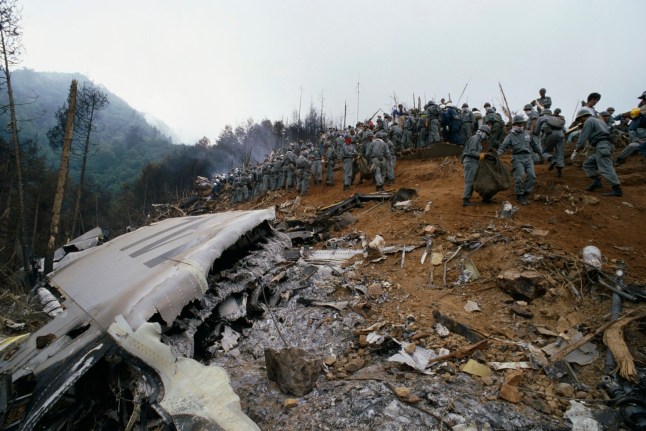
The plane crashed on a steep mountainside (Picture: Corbis Historical/Getty Images)
For a terrifying 30 minutes,the pilots fought to regain control of the plane,which climbed and fell again as they attempted to return to Tokyo.
Meanwhile,passengers began to accept their fate and wrote final messages to their loved ones.
But the out-of-control plane continued to descend and got closer to the mountains,where it crashed and exploded.
It took rescue crews more than 15 hours to get to the crash site,where four survivors,all women,had managed to stay alive.
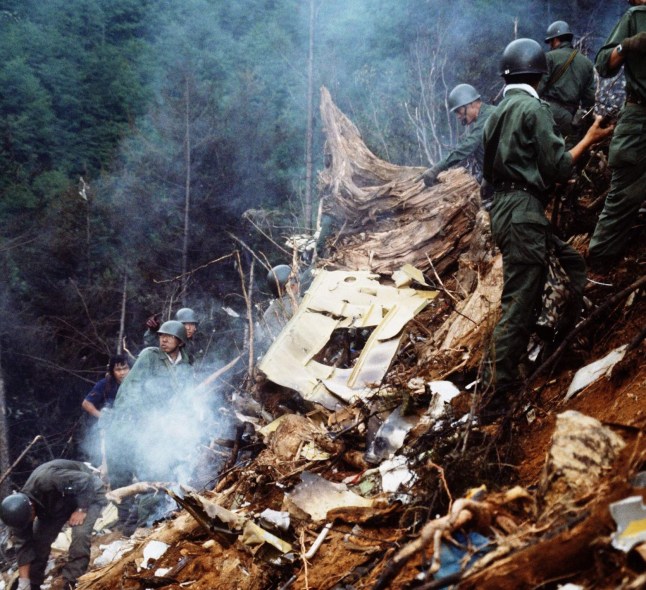
Members of the Japan Ground Self-Defense Force in a rescue operation at the crash site at the ridge of Mount Osutaka on August 13 (Picture: Asahi Shimbun/Getty Images)
Off-duty flight attendant Yumi Ochiai,mum Hiroko Yoshizaki,34,with her eight-year-old daughter Mikiko,and Keiko Kawakai,12,who lost her family in the crash. Keiko was shot out of the plane on impact and catapulted into a tree,where she was found with serious injuries.
All four had sat in the rear of the aircraft.
The women were seated in the final rows – from 54 to row 60.
Yumi recalled the final moments in the plane before everything went silent: ‘After the crash,I heard harsh panting and gasping noises from many people. I hear it coming from everywhere,all around me. There was a boy crying ‘mother.’ I clearly heard a young woman saying “Come quickly!”.’
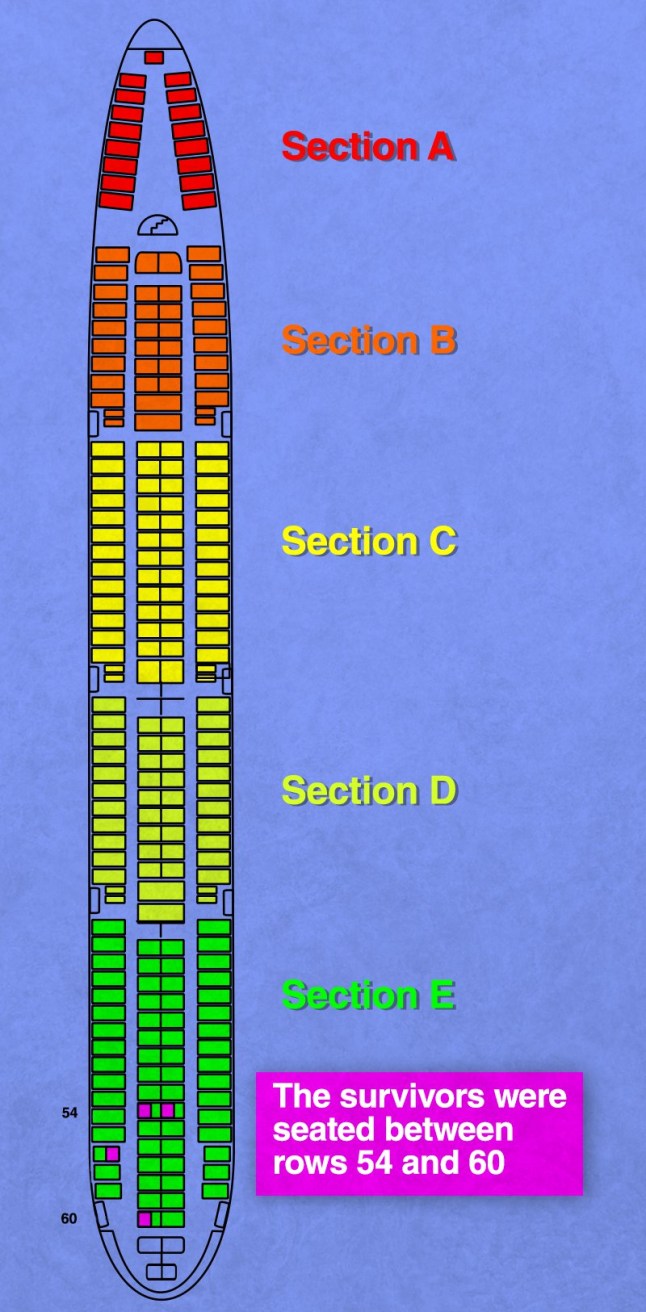
A graph shows where the four survivors of the Japan Airlines flight 123 were seated in the plane(Picture: Wikimedia/Metro)
The JAL123 disaster is known as Japan’s aviation industry’s equivalent of the sinking of the Titanic,Christopher Hood,a fellow at the University of Bath’s Centre for Death and Society,said.
Hood,who has written a book about the crash and spent a night at the crash site to get into the shoes of the survivors,said as many as 100 people might have survived the impact.
‘If the rescue teams arrive sooner,there would have been more survivors. The survivors there knew it was getting quieter and quieter. Fifteen hours is a long time.’
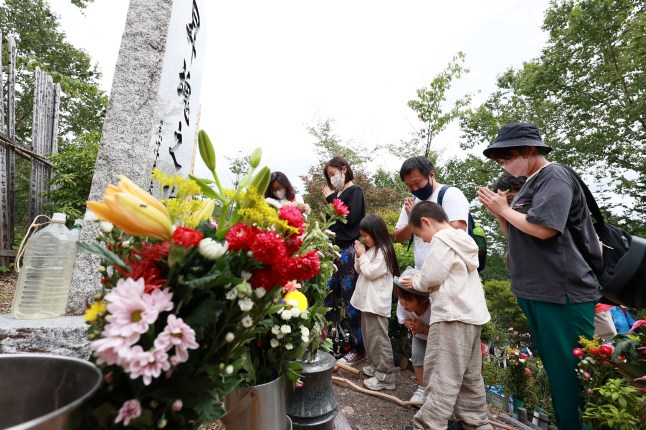
People gather every year to pay their respects to the victims of the Japan Airlines flight 123 crash near the village of Ueno,Gunma prefecture (Picture: AFP/Getty Images)
He said the lack of GPS at the time contributed to possible miscalculations as search aircraft relayed the location back to the control tower in degrees and miles,but ‘the problem is the speed they are going at,making it it difficult to judge and there’s a margin of error. With degrees,one degree makes a 1-2km difference already.
‘And the defence force reported back in nautical miles,while Japan uses kilometres. It was the perfect storm and it was a mountainous area.’
The Japanese society is less interested in the individual survivours than often is the case in the UK and US,Hood explained.
Most of the media attention focused on the 12-year-old Keiko,who became a nurse and helped victims when an earthquake hit.
Hood said the cause of the crash is still debated to this day.
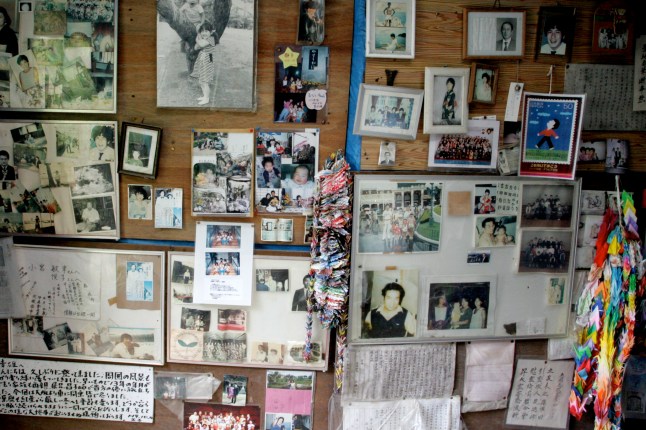
Pictures of those killed in the crash at a memorial wall (Picture: NurPhoto/Getty Images)
While the official cause is a faulty repair to the bulkhead,which led to the decompression explosion,an alternative theory is that air was leaking out slowly,which the tail was not designed to take,eventually causing it to break.
A wilder theory,which has been debunked,is that the plane was hit by a missile,which then led to cover-up attempts.
Hood said the same plane had been involved in an accident in 1978,claiming that the repairs were done ‘incorrectly.’
He told Metro the impact of the crash was ‘huge’ in 1985,and it has been etched in the society’s consciousness.
‘The list of passengers was read on TV,and this is how many people found out about their loved one,’ Hood said.
He said: ‘It is the deadliest single plane crash,and it had an incredible number of people for a domestic flight. Imagine this happening on a flight from London to Edinburgh.
‘The crash happened on August 12,which is like the day of the dead or Halloween,and it added symbolism. There were famous people on board,and so many people connect themselves to the crash with one or two steps.’
The disaster struck just days after the 40th anniversary of the brutal atomic bombings of Hiroshima and Nagasaki,which added to the collective pain.
Hood said the next generations in Japan will learn about the disaster and interest will ‘only grow rather than go away.’
‘And families are keen for it to be reported. This crash has become the figurehead of all transport accidents.’
Every year,people gather at the JAL123 at the Osutaka ridge in the Ueno village,with this year marking 40 years.